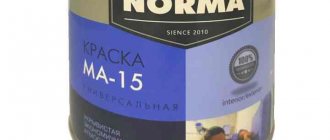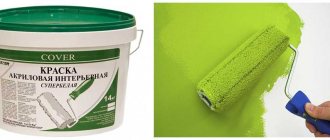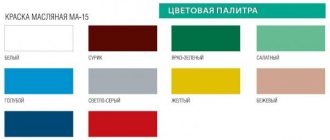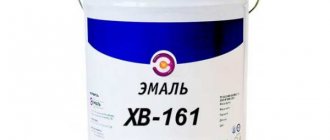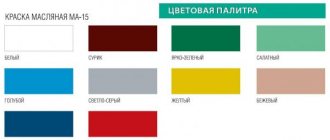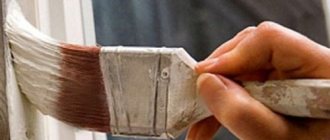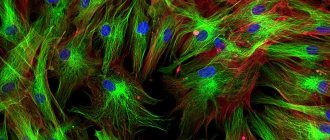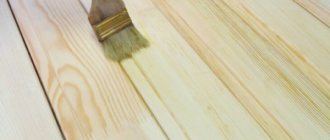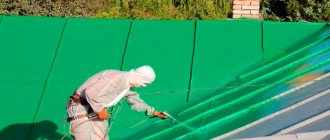Today many types of paints and varnishes are produced. One of the durable and wear-resistant dyes is polyester powder paint. In past decades, polyesters were often used to coat non-ferrous metals and other materials, but the production of polyester-based powder paint mixtures was hampered by the lack of industrial production of polyester solids.
Polyesters began to be mass produced only in the mid-1960s, and by the mid-1970s, approximately 15-20% of the volume of thermoactive powder substances was produced in many countries around the world. Polyester powders can be divided into several types. One of the most common is polyester, which is cured with triglyceridyl isocyanurate. During the following decades, polyester paints were constantly developed and their characteristics improved, although they remained toxic and harmful to human health for many years, in comparison with, for example, epoxy mixtures or epoxy-polyester substances.
Description
Over the past few years, manufacturers have strived to make polyester products safer and more environmentally friendly. As a result, they began to produce polyester powder paints that have high technical characteristics, but at the same time have less toxicity. Such dyes can even be used for containers that come into contact with food, as well as for coloring children's furniture and toys. When polyester-based powder paint dries, it becomes completely safe and does not emit harmful, toxic substances into the air. Polyester dyes have become safe, but their cost has increased slightly.
These compositions have an excellent indicator of weather resistance, have increased resistance to wear, abrasion, and also have good mechanical strength. These mixtures have different levels of weather resistance, but in any case, polyester paints are no worse than any other powder paints. Painting compositions based on polyester substances have excellent dielectric capacity, which is close to that of epoxy or epoxy-polyester paint. But the alkali resistance of polyester coatings is much lower.
Most often, polyester paint for metal is applied in several layers, the total coating thickness is from 60 to 120 microns. The painted surface has a glossy shine. These dyes have good adhesion to various metals, even light alloys.
Surface type
The surface treated with this paint can have a matte or glossy effect. The matte colorant contains scaly particles. The different reaction characteristics of the impurity provide the matte appearance. Mainly used in mechanical engineering.
The glossy paint composition contains various epoxy and polyester film formers. It is also based on the pigment necessary to realize a certain color.
The glossy surface is characterized by high reflective properties and resistance to corrosion processes, which is important for the automotive industry.
Areas of application
Polyester and epoxy-polyester powder paints are used to create a protective layer from the adverse effects of atmospheric factors. The compositions can be used in multilayer technology, for example, for painting car wheels, as a finishing paint and varnish material. Here is a list of the main objects that can be painted with polyester-based powder mixtures:
- aluminum profiles;
- various building architectural designs;
- metal parts of cars;
- wheelsets;
- agricultural machinery;
- garden tools and equipment;
- furniture items;
- Appliances;
- electrical equipment;
- metal utensils;
- heating devices, and much more.
Painted products and structures can be used both indoors and outdoors. They have a stable shine, water resistance, resistance to liquid fuels, solvents and mineral oils.
Polyester paints are used to process various metal parts that are subject to friction, as well as chemicals and abrasive wear. These dyes can be applied to some types of chemical equipment, containers in which gaseous and liquid chemicals are stored. Polyester paint is suitable for furniture; it can be applied to other types of powder compositions, for example, polyacrylate, epoxy resin, etc.
What else to consider?
To really buy what you need, it is worth considering a number of factors. An important role is played by the conditions in which the painting will be carried out, the type of surface, and the color of the coating. When choosing a material, care must be taken to ensure that during the painting process, external factors (for example, cold) do not affect the durability and performance characteristics.
When making a purchase in a store, you should choose between several varieties. In order not to doubt your choice, you should first study the information about each paint by scrolling through the reviews on construction forums. This will allow you to become better acquainted with the quality indicators of the material. You should not take the first thing you like on the store counter: the art of selling lies in putting in a favorable place the material that needs to be sold.
The powder coating process can be seen below.
Epoxy-polyester paints
Hybrid or epoxy-polyester powder paints are an effective combination of two substances - polyester and epoxy resins. These compositions have an attractive price, and they also have many technological advantages, for example, the painted surface is resistant to high temperatures, chemical resistance, improved mechanical properties, and also low sensitivity to ultraviolet radiation.
Epoxy-polyester paint has excellent decorative qualities, so this paint and varnish material is in great demand. Thanks to modern technologies for the manufacture and application of powder paints, it was possible not only to expand the color palette, but also to create coatings of different structures. This type of polyester paint makes it possible to create a leather-like surface, moiré patterns, surfaces of different shades, antique coatings, etc.
Composition and characteristics of enamel
Polyester and epoxy polyester paints are solid dispersions. They include a number of components:
- film-forming elements;
- Drying agents are hardeners that help speed up the drying process;
- pigments - substances responsible for producing different colors;
- additives – provide the dye with excellent technical properties.
These dyes contain no solvents. They also do not contain epoxy resin. These substances belong to the category of thermosetting film-forming substances.
When producing such compositions under production conditions, all components are mixed under the influence of elevated temperatures. Then the finished mass is cooled and crushed. After this, it is sifted. Due to this, it is possible to obtain a homogeneous powder at the output. The dispersion has homogeneous properties and physical and chemical constancy. It is also characterized by stability during storage and use.
Areas of application
Epoxy-polyester powder paints are used for various purposes, depending on the ratio of epoxy and polyester substances. Coloring compositions used:
- products and items used in household use;
- various metal surfaces, including car bodies;
- garden structures;
- office premises and items;
- pipelines;
- furniture used in schools and medical institutions;
- sports equipment and accessories;
- containers for storing chemical products;
- lighting, commercial, electrical, installations and equipment.
Epoxy-polyester mixtures are used to protect various non-ferrous metals, for example, brass, copper, bronze. The painted layer prevents oxidation and corrosion, so the metal surface is protected from damage for a long time. These coloring mixtures are also used for application to glass containers and surfaces, for example, perfume and cosmetic bottles, on which the paint creates a very attractive, textured film of any color.
Peculiarities
Powder paint has a number of positive aspects and is becoming a popular alternative to traditional painting methods. The main working reagent here is dispersion mixtures of various substances, more precisely solid particles. The exclusion of solvent from the paint composition gives it such advantages as complete environmental safety and zero risk of fire.
By changing the type of pigment and its concentration, the manufacturer can influence the level of adhesion, flow coefficient and susceptibility to static electricity. The pigments in the powder product are the same as those in cans or jars of liquid mixtures.
Coloring rules
Polyester and epoxy-polyester paint can be applied in two ways:
- electrostatic spray;
- tribostatic spraying.
It is important to remember that these paints require caution during application. During painting, it is important to work in personal protective equipment - a respirator, goggles and gloves. Painting the surface with these paints includes the following steps:
- old paint and varnish materials are removed, as well as unevenness, defects, rust from the metal surface, dust, and other contaminants;
- one or two layers of primer are applied;
- after the primer has dried, powder paint is applied using the electrostatic or tribostatic method;
- polymerization of the applied layer is carried out. This process involves heating the painted surface to a high temperature - from 140 to 220 degrees, depending on the type of polyester paint. When the powder is heated to this temperature on the metal, it slowly melts into a strong, uniform layer.
The painted product can be glossy or textured. A glossy finish is worth choosing if you need to hide small unevenness or any defects on the surface. And the textured layer emphasizes all the advantages of the design or detail.
Peculiarities
Powder paint was invented quite a long time ago, but it is now that it has gained the greatest popularity. Its peculiarity is that it is produced in the form of a powder and remains in this state even when applied to the surface. Such characteristics allow it to obtain a number of advantages related to the environmental friendliness of the product. Unlike regular paint, there are no organic solvents, so it is completely safe for humans.
The process of applying such material is carried out using special equipment, which allows you to work economically, without wasting more than necessary and without polluting the environment with elements that do not fall on the surface to be painted.
Looking at the composition in more detail, you can find a hardener, film-forming resin, filler, pigment and target additive in it. The advantages of such paint are undeniable, and most importantly, when working with it there is no need to use a solvent, because the structure does not change its properties under any circumstances. The technical characteristics of this material allow it to be used for painting a wide variety of surfaces, including:
- metal surfaces;
- household appliances (microwave ovens, refrigerators and more);
- sports equipment, equipment for athletes;
- furniture;
- lighting;
- glass and ceramic products;
- machine elements.
Surfaces that can be painted with powder paint can be very diverse. This type of painting is of particular importance in the case of painting the inside of pipes that are under high pressure. This material can withstand high temperatures, so not every type of paint can be used for interior decoration.

